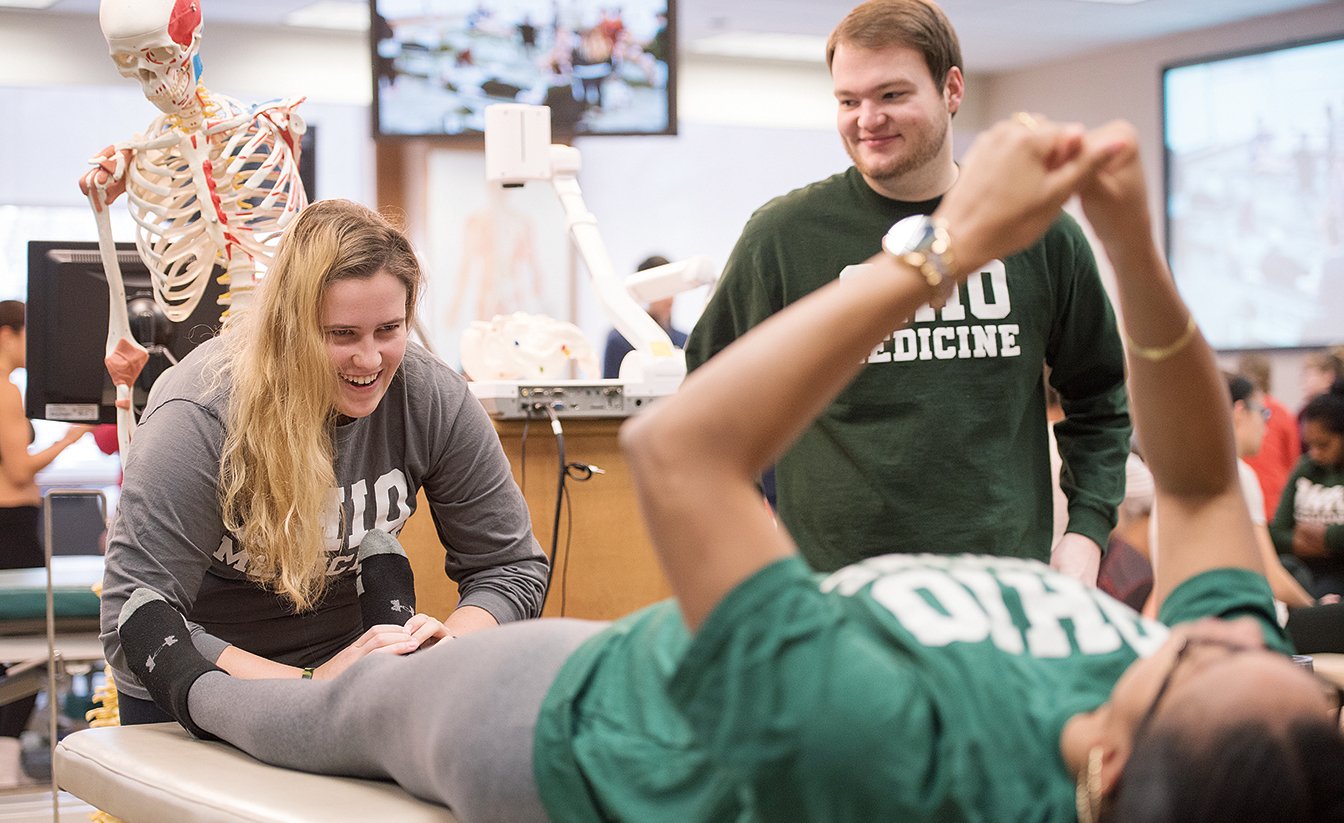
It’s Monday morning, and the entire first-year class at Ohio University Heritage College of Osteopathic Medicine is meeting a new patient.
Spread out over three campuses in Ohio and connected by videoconference, more than 260 medical students—the first to be trained in the College’s innovative new Pathways to Health and Wellness Curriculum—are starting their week as they do routinely on Mondays: diving into the simulated patient case on which their learning activities for the week will build.
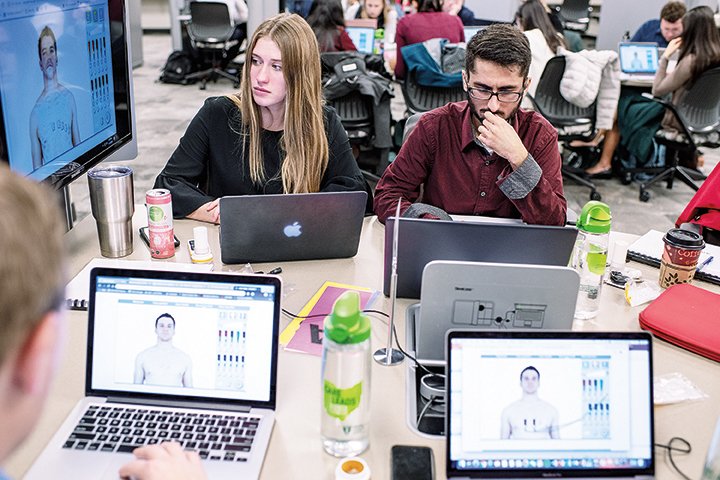
With the launch of HCOM’s Dublin campus, central Ohio-based students seeking an osteopathic medical degree call it their home campus. Photo by Rich-Joseph Facun, BSVC ’01
They’ve just finished a quiz to assess how well they’ve mastered assigned material—readings, PowerPoints, recorded lectures—assigned in preparation for this week’s topic. After taking the exam individually, they take it again in a standing eight-student cohort who collaborate on lab and learning activities, mirroring the way modern health professionals increasingly work in teams.
This week’s patient is visiting the doctor for a wellness check-up. A Heritage College faculty member assigns each group a question for the fictitious patient to answer. Another faculty member takes the role of the patient, answering students’ questions about diet, exercise, and more. The class is alive with interaction, as students chime in from their microphone-equipped stations. As the patient answers questions, students suggest further follow-up questions.
In the coming week, all the specialized material the students learn, from biochemistry to gross anatomy to social factors affecting health, will be woven into their understanding of this patient’s case.
Welcome to “Osteopathic Approach to Patient Care 1 – Wellness,” the only fall semester class on the first-year academic schedule. A course on acute illness follows in the second semester; the second-year curriculum will feature courses on chronic illness, then return to wellness.
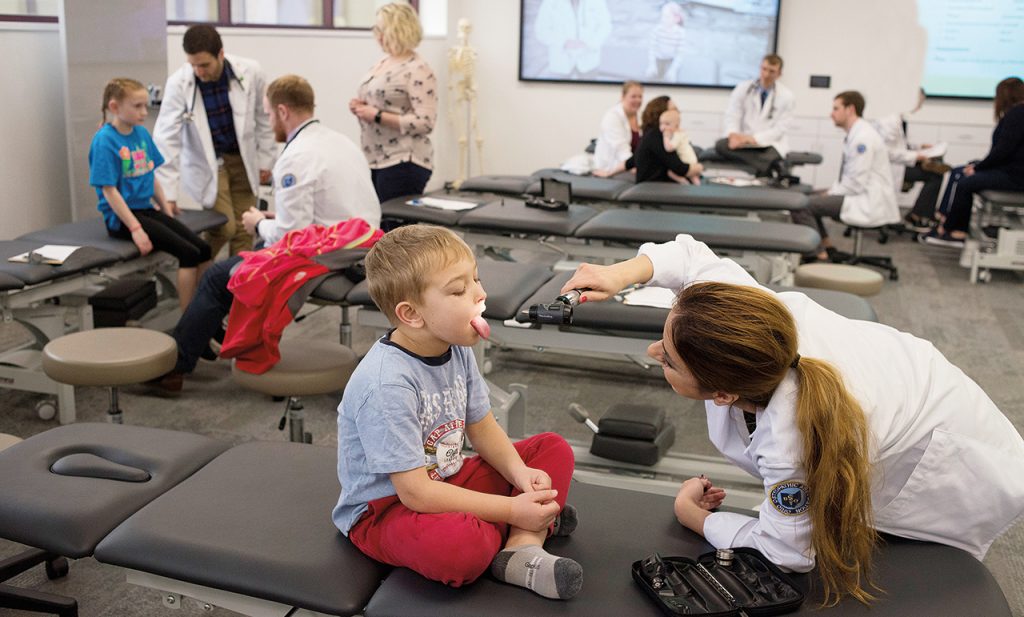
Future physicians peer into the practice of pediatric care at the Cleveland Campus pediatric OMM lab. Ty Wright, BFA ’02, MA ’13
The new curriculum, launched in fall 2018, represents one seamless arc, following patients through stages of sickness and healing.
The Pathways to Health and Wellness Curriculum (PHWC) demonstrates what medical training of the future looks like: training organized around detailed patient cases, delivered to and absorbed in teams, and designed to present information in a way the physician will use it. It abandons auditorium lectures for a “flipped classroom,” in which students prepare outside class for interactive, team-based exercises in the learning space. Information coming from formerly discrete disciplines has been merged into a holistic, practice-centric way, offered by faculty from disciplines relevant to the case.
“We are given cases with patients’ names, their whole history, their whole medical background,” says first-year student William Naber. “Together, we take the material we learned that week and apply it to the case. And we help each other understand things that we didn’t understand about the case. That’s why the teamwork keeps coming back in over and over.”
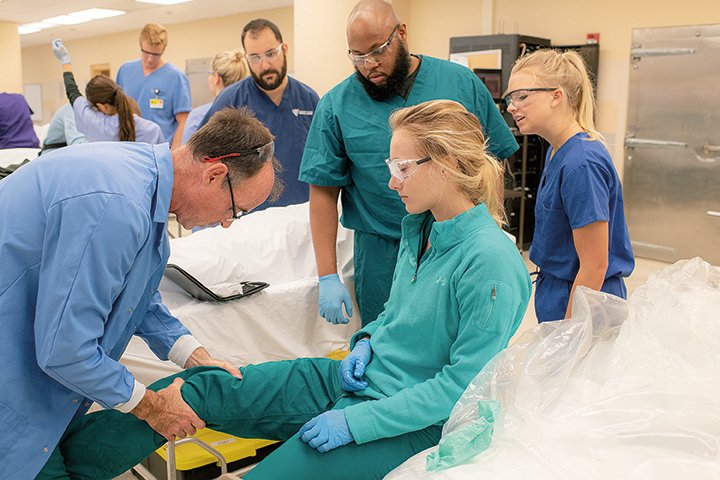
Students lean into an anatomy lesson. Photo by Rich-Joseph Facun, BSVC ’01
Jody Gerome, DO ’05, associate dean for curriculum, says the PHWC continues the long-standing Heritage College practice of putting students into health care spaces like clinics and hospitals from their early days, yet now it replicates such practice venues in the classroom.
This ensures that “the way that students are introduced to major concepts is through the lens of a patient experience,” she says. “The faculty build the content that they’re teaching together, as a team, and then deliver it as a team. Students are then working in teams to synthesize the information.”
Dr. Ken Johnson, the College’s executive dean and OHIO’s chief medical affairs officer, says the PHWC is integral to the school’s mission.
“It teaches students in a way that research has shown they learn best, and that prepares them for the new realities of health care in the 21st century,” he says. “The doctors we train in it are going to come out of medical school already proficient at working on a modern health care team—with the patient at its center.”
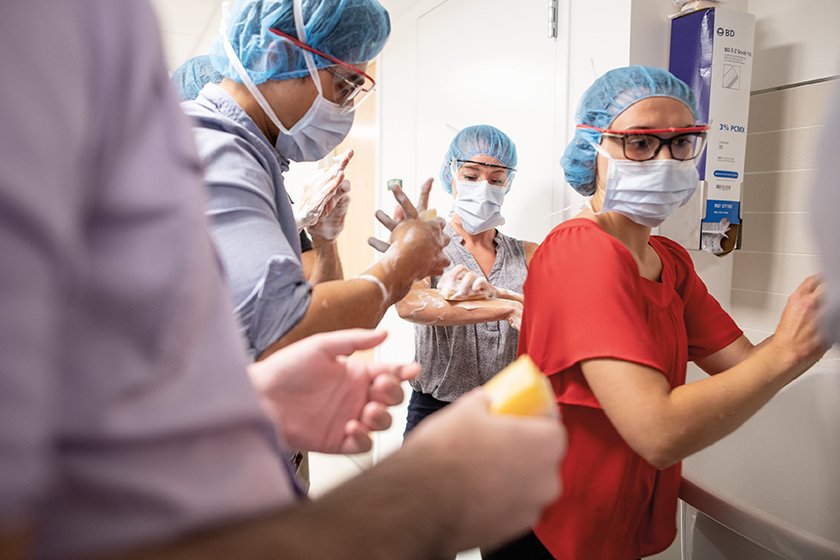
HCOM’s Cleveland campus partners with the world-renowned Cleveland Clinic and students train throughout the clinic’s enterprise. Photo by Rich-Joseph Facacun, BSVC ’01


